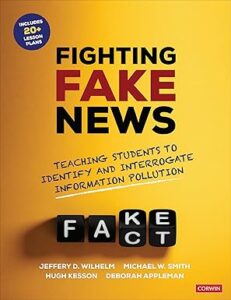
As reported on CNN.com, September 2, 2024
Tech billionaire Elon Musk, a supporter of former President Donald Trump, on Monday posted a fake image of what appears to be Vice President Kamala Harris dressed in a red communist uniform.
“Kamala vows to be a communist dictator on day one. Can you believe she wears that outfit!?” Musk posted on X, the social media platform he owns, in response to the vice president’s post warning about Trump being a “dictator on day one.”
According to X’s policy, users “may not share synthetic, manipulated, or out-of-context media that may deceive or confuse people and lead to harm. … In addition, we may label posts containing misleading media to help people understand their authenticity and to provide additional context.”
References:
- AP News – A parody ad shared by Elon Musk clones Kamala Harris’ voice, raising concerns about AI in politics
- NBC News – Elon Musk made a Kamala Harris deepfake ad go viral, sparking a debate about parody and free speech – A parody campaign ad using a fake Kamala Harris voice reposted by Elon Musk brings questions about deepfakes and the election into sharp focus.
- The New York Times – Elon Musk Shares Manipulated Harris Video, in Seeming Violation of X’s Policies – The billionaire owner of the social media platform X reposted a video that mimics Vice President Kamala Harris’s voice, without disclosing that it had been altered.
Recommended Reading:

America’s Deadliest Election: The Cautionary Tale of the Most Violent Election in American History
From CNN’s Chief Political Correspondent Dana Bash, the fast-paced story of the extraordinary election that led to hundreds of murders, warfare in the streets of New Orleans, two governors of Louisiana—and changed the course of politics in our country.
The Election of 1872 was the most contentious in American history. After both parties complained of corruption, neither candidate would concede, two governors claimed office and chaos erupted. Rival newspapers engaged in a bitter war of words, politicians plotted to overthrow the government, and their supporters fought in the streets and attempted assassinations. The entire country watched in grim fascination as the wounds of the Civil War were ripped open and the promise of President Grant’s Reconstruction faltered in the face of violent resistance and the birth of the Ku Klux Klan.
In this riveting book, Dana Bash and David Fisher tell the incredible, little-known story of the election that pushed democracy to the breaking point, and sparked historic events including:
- The Colfax Massacre, in which at least 150 Black men were killed by white supremacists
- The extraordinary train race from New York to New Orleans for control of the state government
- The election of the first black Congressman from Louisiana in the face of violent resistance
- The Supreme Court ruling that ended Reconstruction and became the foundation of Southern segregation, changing the American legal system for the next century
Readers will find eerie parallels to today’s divided political landscape and leaders willing to seize power no matter the cost. An eye-opening warning of what’s at stake and what it takes to protect our democracy, this is a must-read tale of America’s deadliest election.
Recommended Reading:

Critical thinking and online reading need to go hand in hand―but they often don’t. Students click, swipe, and believe because they don’t know how to do otherwise. At times, so do we. And that’s a problem. Fighting Fake News combats this challenge by helping you model how to read, myth-bust, truth-test, and respond in ways that lead to wisdom rather than reactivity.
No matter what content you teach, the lessons showcased here provide engaging, collaborative reading and discussion experiences so students can:
- Notice how teacher and peers read digital content, to be mindful of how various reading pathways influence perception
- Identify the author background, the website sponsor, and other evidence that help set a piece in context
- Stress-test the facts by evaluating news sources, reading laterally, and other critical reading strategies
- Use “Reader’s Rules of Notice” to learn to identify common rhetorical devices used to influence the reader
- Be aware of how for-profit social media platforms feed on our responses to narrow rather than widen our reading landscape
We are still in the wild west era of the digital age, scrambling to impart a safer, ethical framework for evaluating information. Thankfully, it distills to one mission: teach students (and ourselves) how to think critically, and we will forever have the tools to fight fake news.

Leave a Reply